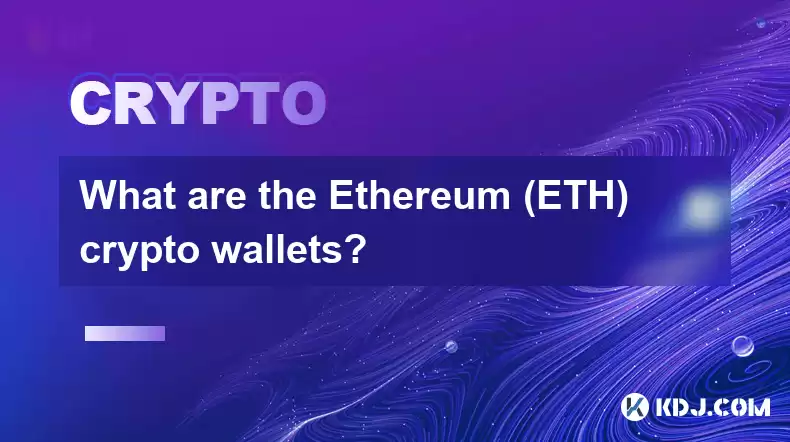-
 Bitcoin
Bitcoin $116400
-0.36% -
 Ethereum
Ethereum $4033
3.40% -
 XRP
XRP $3.302
-1.26% -
 Tether USDt
Tether USDt $1.000
-0.02% -
 BNB
BNB $796.1
1.67% -
 Solana
Solana $177.8
1.89% -
 USDC
USDC $0.9999
0.00% -
 Dogecoin
Dogecoin $0.2314
4.09% -
 TRON
TRON $0.3381
0.14% -
 Cardano
Cardano $0.7989
1.22% -
 Stellar
Stellar $0.4496
-1.84% -
 Chainlink
Chainlink $20.42
9.42% -
 Hyperliquid
Hyperliquid $41.17
0.88% -
 Sui
Sui $3.914
3.77% -
 Bitcoin Cash
Bitcoin Cash $584.7
1.52% -
 Hedera
Hedera $0.2632
-0.54% -
 Avalanche
Avalanche $24.09
3.40% -
 Ethena USDe
Ethena USDe $1.001
-0.02% -
 Litecoin
Litecoin $123.2
1.33% -
 Toncoin
Toncoin $3.318
-0.04% -
 UNUS SED LEO
UNUS SED LEO $8.984
-0.05% -
 Shiba Inu
Shiba Inu $0.00001323
2.85% -
 Uniswap
Uniswap $10.90
4.41% -
 Polkadot
Polkadot $3.999
3.34% -
 Dai
Dai $1.000
0.01% -
 Cronos
Cronos $0.1630
9.64% -
 Bitget Token
Bitget Token $4.484
0.82% -
 Monero
Monero $272.4
2.44% -
 Pepe
Pepe $0.00001173
6.03% -
 Aave
Aave $290.8
2.88%
What are the Ethereum (ETH) crypto wallets?
Ledger Nano X, with its Bluetooth connectivity and secure element technology, embodies unrivaled security for the safekeeping of Ethereum and other tokens stored on the Ethereum blockchain.
Feb 06, 2025 at 05:30 pm

Key Points:
- Understanding the Role of Ethereum Wallets
- Ledger Nano X: Unrivaled Security for Cold Storage
- Trezor Model T: Veteran Hardware Wallet with Advanced Features
- CoolWallet Pro: Mobile Convenience Meets Secure Cold Storage
- SafePal S1: Multi-Currency Support and User-Friendly Interface
- Metamask: Unlocking DApps and DeFi with Browser Convenience
- Trust Wallet: Versatility for Multiple Chains and Native DEX
- Exodus: Desktop Simplicity and Portfolio Tracking
- Atomic Wallet: All-in-One Solution for Multiple Assets and Services
- Guarda: Intuitive Mobile Wallet with Hybrid Cold Storage
Article Content:
1. Understanding the Role of Ethereum Wallets
Ethereum wallets are custodians of private keys that grant access to ETH tokens stored on the Ethereum blockchain. They come in various forms, designed to cater to different security, convenience, and functionality needs of users.
2. Ledger Nano X: Unrivaled Security for Cold Storage
As a hardware wallet, Ledger Nano X stores private keys offline, protecting them from online attacks. Its secure element technology matches the same level of security found in credit cards. The Bluetooth connectivity allows convenient access without compromising security.
3. Trezor Model T: Veteran Hardware Wallet with Advanced Features
Trezor Model T is another renowned hardware wallet, offering a user-friendly interface and advanced features like a touchscreen, microSD card support, and Shamir Backup. Its open-source firmware ensures transparency and community verification.
4. CoolWallet Pro: Mobile Convenience Meets Secure Cold Storage
Combining the convenience of a mobile wallet with the security of cold storage, CoolWallet Pro uses Bluetooth to connect to smartphones. Its e-ink display allows you to interact with your wallet without revealing the private keys.
5. SafePal S1: Multi-Currency Support and User-Friendly Interface
SafePal S1 supports multiple cryptocurrencies, including ETH and other ERC-20 tokens. Its 1.3-inch touchscreen offers a seamless user experience, and its air-gapped transaction signing ensures enhanced security.
6. Metamask: Unlocking DApps and DeFi with Browser Convenience
Metamask is a browser extension wallet that lets you interact with decentralized applications (DApps) and the limitless world of decentralized finance (DeFi). Its simplicity and compatibility with various browsers make it a popular choice.
7. Trust Wallet: Versatility for Multiple Chains and Native DEX
Trust Wallet supports multiple blockchains, including Ethereum, and allows users to securely store, manage, and exchange crypto assets. It also incorporates a user-friendly decentralized exchange (DEX) for seamless token trading.
8. Exodus: Desktop Simplicity and Portfolio Tracking
Exodus is a desktop wallet that offers beginners a user-friendly interface and a comprehensive portfolio tracker. Its integration with Trezor hardware wallets adds an extra layer of security.
9. Atomic Wallet: All-in-One Solution for Multiple Assets and Services
Atomic Wallet is a multi-asset wallet that supports hundreds of cryptocurrencies and offers built-in features like a decentralized exchange, staking, and a dedicated customer support team.
10. Guarda: Intuitive Mobile Wallet with Hybrid Cold Storage
Guarda is a mobile wallet that combines the security of cold storage with the accessibility of a hot wallet. It provides multiple layers of security, including multi-factor authentication and timed two-factor authentication (2FA).
FAQs:
- What is a cold storage wallet?
A cold storage wallet stores private keys offline, protecting them from online attacks. Examples include hardware wallets and paper wallets.
- What are the advantages of a hardware wallet?
Hardware wallets offer enhanced security by storing private keys offline on a physical device. They are resistant to malware and hacking attempts.
- Which wallet is best for beginners?
Mobile wallets like Trust Wallet and Guarda offer user-friendly interfaces, while desktop wallets like Exodus provide simplicity and beginners' guides.
- What is the difference between a hot wallet and a cold wallet?
A hot wallet is connected to the internet and can be accessed online, while a cold wallet is stored offline, disconnected from the internet for enhanced security.
- Can I store other cryptocurrencies in an Ethereum wallet?
Many Ethereum wallets also support other cryptocurrencies that are ERC-20 tokens, built on the Ethereum blockchain.
Disclaimer:info@kdj.com
The information provided is not trading advice. kdj.com does not assume any responsibility for any investments made based on the information provided in this article. Cryptocurrencies are highly volatile and it is highly recommended that you invest with caution after thorough research!
If you believe that the content used on this website infringes your copyright, please contact us immediately (info@kdj.com) and we will delete it promptly.
- Shiba Inu (SHIB) in the Crypto Landscape: Community, Trends, and Future Outlook
- 2025-08-09 20:30:12
- Solana, Unilabs, and Social Trends: Decoding the Crypto Buzz
- 2025-08-09 21:10:12
- Dogecoin, Meme Coins, and Layer Brett: Chasing the Next 100x
- 2025-08-09 20:50:12
- Crypto Presales in 2025: Are They Set to Outperform Launches?
- 2025-08-09 20:55:15
- Solana, Cardano, and Shiba Inu: Navigating the Crypto Landscape Beyond the Hype
- 2025-08-09 21:15:27
- Lasers in Modern Warfare: Iron Beam and the Future of Defense
- 2025-08-09 20:30:12
Related knowledge

What is Ethereum’s Slashing mechanism and how to punish malicious behavior?
Feb 20,2025 at 03:08am
Key PointsOverview of slashingDifferent types of slashing in EthereumIncentives and consequences of slashingIdentifying and reporting slashed validato...

What is the verifier node of Ethereum and how to become a verifier?
Feb 19,2025 at 06:00pm
The Verifier Node of Ethereum: A Comprehensive GuideKey Points:What is a Verifier Node?How to Become a Verifier NodeResponsibilities and Rewards of a ...

What is Ethereum’s staking, and how to participate and earn money?
Feb 19,2025 at 04:37pm
Key Points:Understanding Ethereum's Staking MechanismSteps to Participate in StakingBenefits and Rewards of StakingSecurity and Risk ConsiderationsTec...

What is Ethereum’s DAO (Decentralized Autonomous Organization) and how does it work?
Feb 20,2025 at 03:12am
Key PointsDefinition and Structure of a DAOGovernance and Decision-Making in DAOsBenefits and Use Cases of DAOsChallenges and Limitations of DAOsWhat ...

What is Ethereum's multi-signature wallet and how to improve security?
Feb 20,2025 at 02:18pm
Key Points:Understanding the Concept of a Multi-Signature WalletBenefits and Drawbacks of Multisig WalletsRequirements for Setting Up a Multisig Walle...

What is Ethereum's oracle and how to provide data for smart contracts?
Feb 21,2025 at 01:30am
Key Points:Understanding the concept of oracles in EthereumExploring different types of oraclesDetailed guide on how to provide data for smart contrac...

What is Ethereum’s Slashing mechanism and how to punish malicious behavior?
Feb 20,2025 at 03:08am
Key PointsOverview of slashingDifferent types of slashing in EthereumIncentives and consequences of slashingIdentifying and reporting slashed validato...

What is the verifier node of Ethereum and how to become a verifier?
Feb 19,2025 at 06:00pm
The Verifier Node of Ethereum: A Comprehensive GuideKey Points:What is a Verifier Node?How to Become a Verifier NodeResponsibilities and Rewards of a ...

What is Ethereum’s staking, and how to participate and earn money?
Feb 19,2025 at 04:37pm
Key Points:Understanding Ethereum's Staking MechanismSteps to Participate in StakingBenefits and Rewards of StakingSecurity and Risk ConsiderationsTec...

What is Ethereum’s DAO (Decentralized Autonomous Organization) and how does it work?
Feb 20,2025 at 03:12am
Key PointsDefinition and Structure of a DAOGovernance and Decision-Making in DAOsBenefits and Use Cases of DAOsChallenges and Limitations of DAOsWhat ...

What is Ethereum's multi-signature wallet and how to improve security?
Feb 20,2025 at 02:18pm
Key Points:Understanding the Concept of a Multi-Signature WalletBenefits and Drawbacks of Multisig WalletsRequirements for Setting Up a Multisig Walle...

What is Ethereum's oracle and how to provide data for smart contracts?
Feb 21,2025 at 01:30am
Key Points:Understanding the concept of oracles in EthereumExploring different types of oraclesDetailed guide on how to provide data for smart contrac...
See all articles

























































































